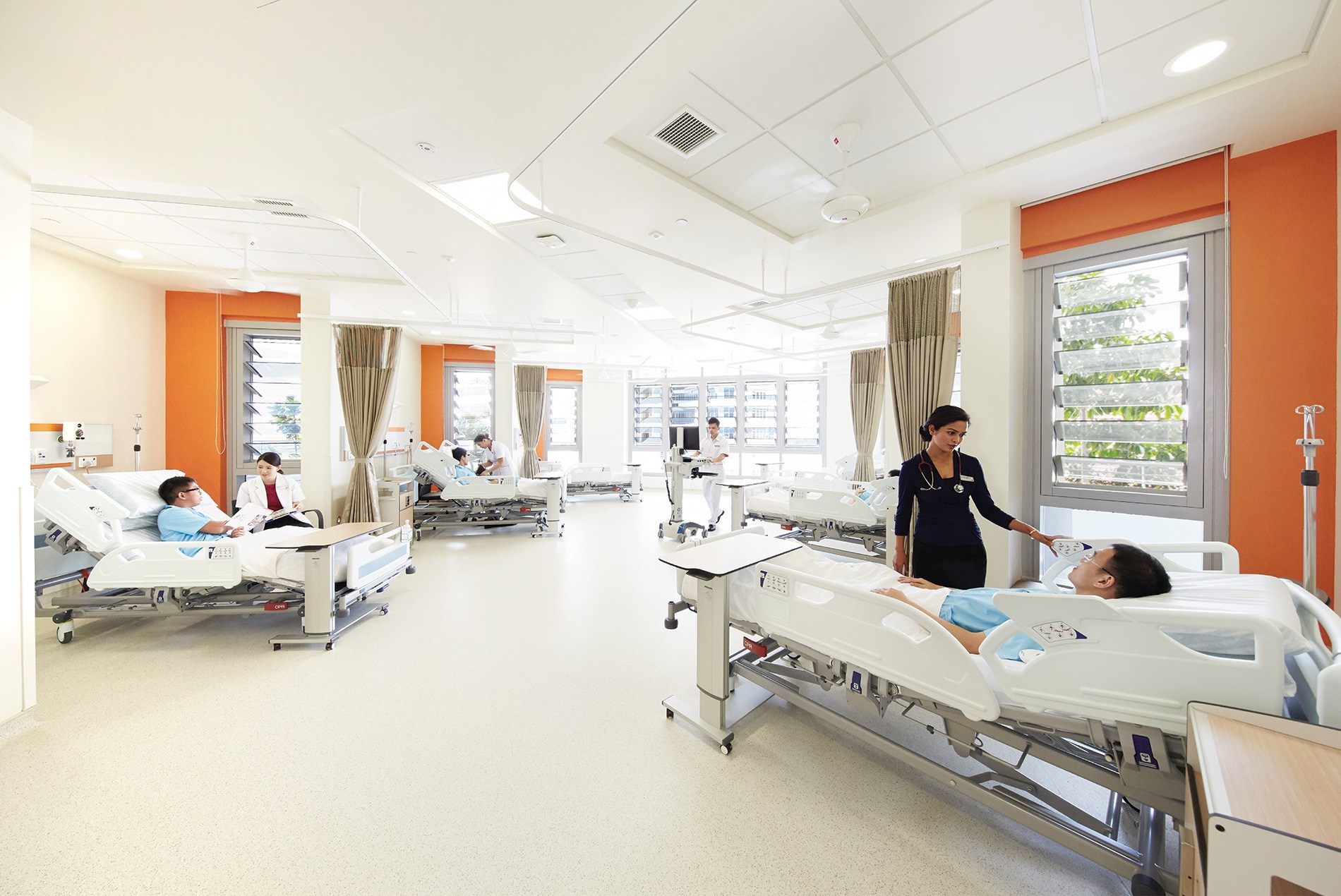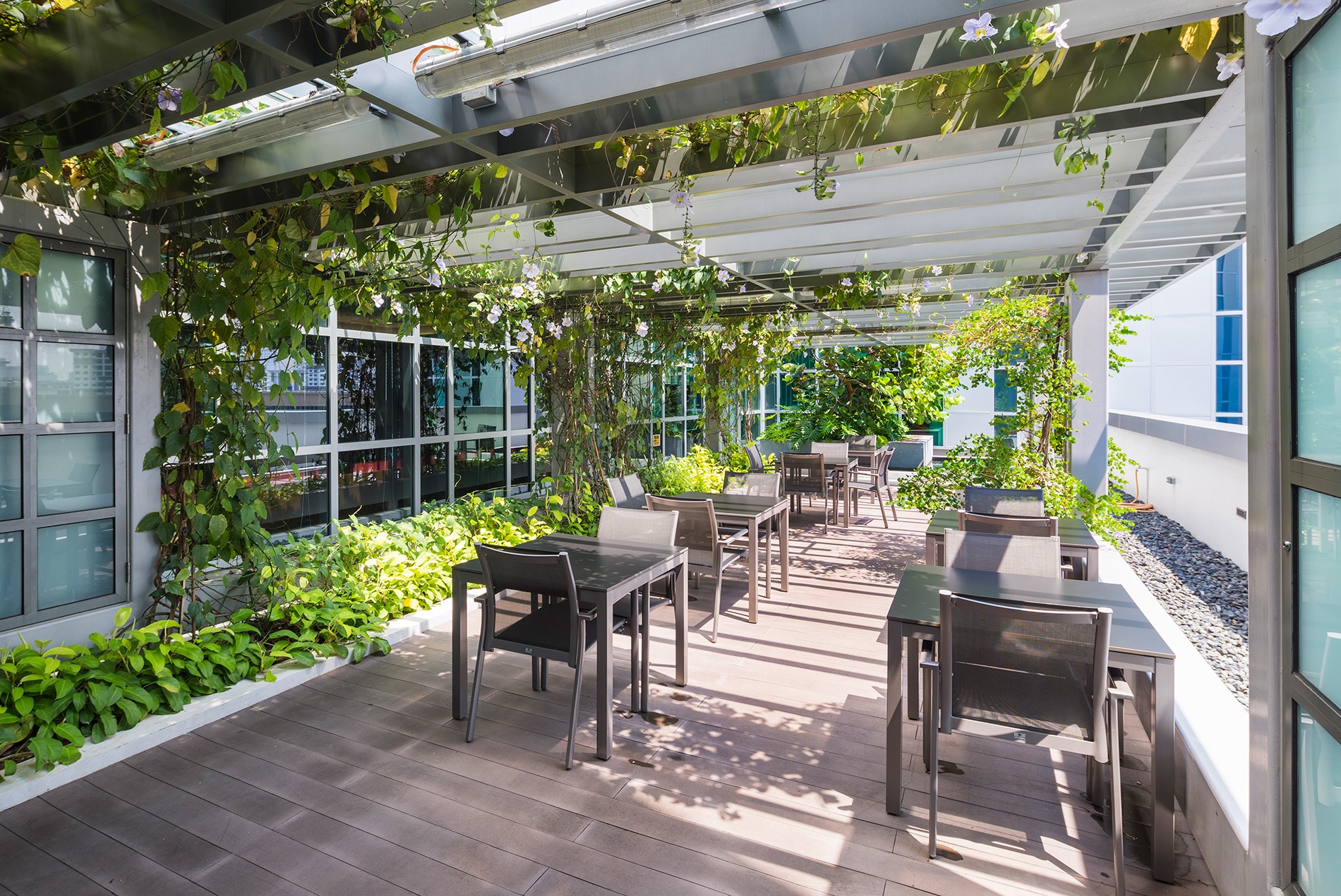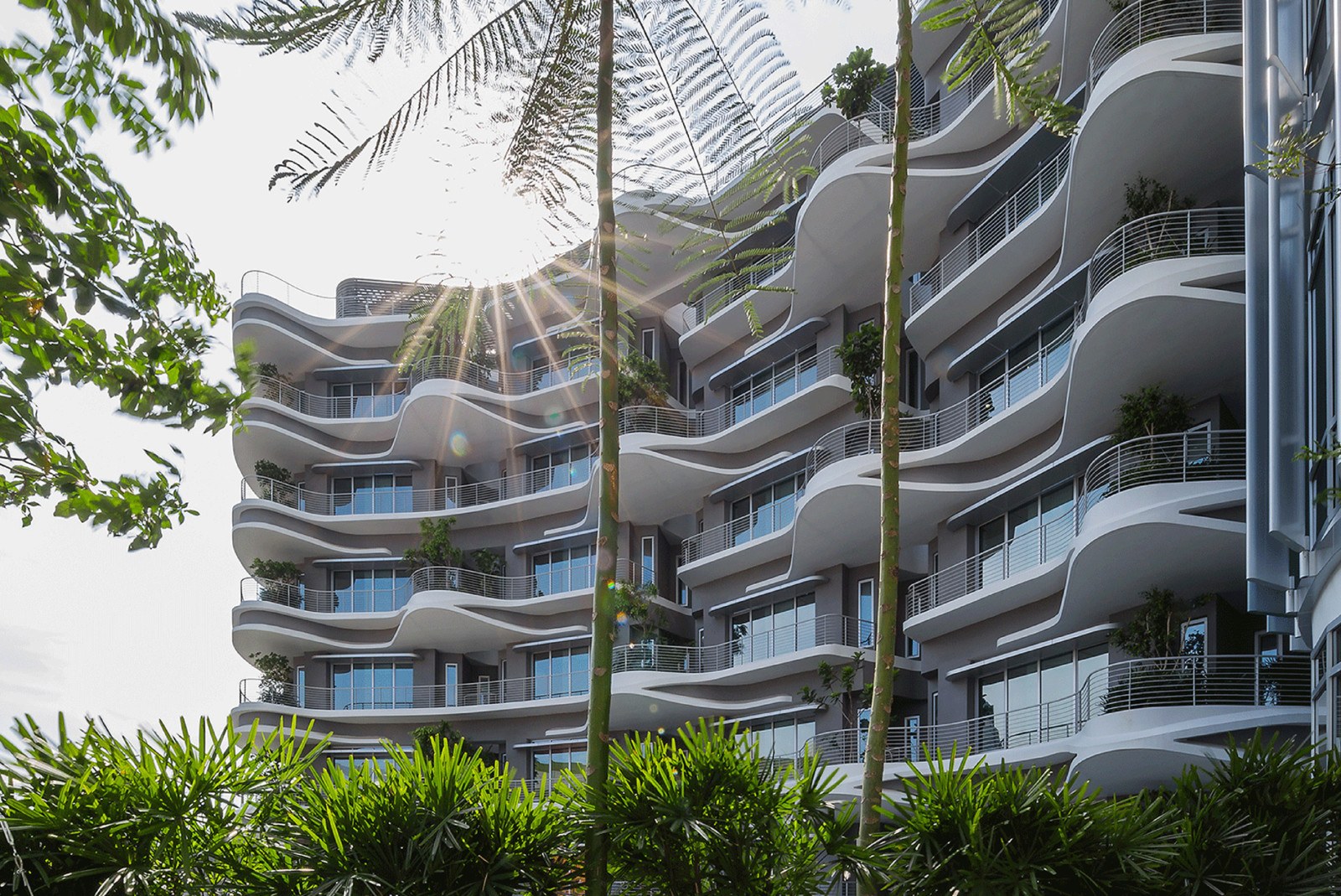Award-winning Singapore hospital designed by HOK, CPG Corporation and Studio 505 continues to set standards for patient care and efficiency.
As Ng Teng Fong General Hospital celebrates its 10th anniversary, the innovative healthcare facility stands as a model for integrating nature, sustainability and patient-centered care into modern hospital design. HOK served as the design and medical planning consultant on the 1.84-million-sq.-ft. facility, working in collaboration with the Singapore Ministry of Health and a team that included CPG Corporation (prime architect and architect of record) and Studio 505 (design collaborator focusing on building envelope development).
Architecture that Heals
The hospital’s most distinctive feature is its patient-centric design philosophy. Every patient room offers therapeutic outdoor views known to contribute to improved mental health and faster recovery. Data shows that Ng Teng Fong patients experience notably shorter hospital stays, averaging 5 days compared to 7 days in other Singapore hospitals.
HOK’s innovative approach to natural ventilation has yielded remarkable results. The building’s design enables cross-ventilation on some floors without relying on air conditioning—providing comfortable healing spaces while significantly reducing energy consumption. This feature has contributed to a 30% improvement in operational efficiency and sustainability metrics.
“Ng Teng Fong proves that thoughtful architecture and planning can significantly improve patient outcomes and operational performance,” said Paul Collins, managing director of HOK’s Hong Kong studio.

Biophilic Design in Healthcare
The integration of nature throughout the facility reflects HOK’s commitment to biophilic design. Patients, staff and visitors have access and views of nature and incorporated interior/exterior vegetation regardless of their location within the hospital. Operable windows allow fresh air to circulate, creating a connection to the outdoors that enhances the healing atmosphere.
Operational Excellence Through Design
The hospital’s design not only promotes healing, it also actively enhances operational efficiency. Strategic features like dedicated pharmacies on every floor and cross-specialty ICUs optimize healthcare delivery, resulting in a 22% reduction in manpower costs while maintaining high-quality care.
The efficient design allows the hospital to increase capacity and serve more patients without increasing costs. The hospital serves a patient population of 1.2 million people with plans to expand to 1.6 million.

Community Integration
Ng Teng Fong breaks the traditional closed-off model of planning by seamlessly integrating with the community. Public spaces are integrated through the hospital’s floors, creating opportunities for the hospital staff and patients to maintain connectivity to the outside. The facility is strategically punctuated with gathering spaces and attractive amenities including a food court, artwork and shopping areas that allow patients to maintain connections with daily life during their recovery journey.
The eased transition between Ng Teng Fong and the adjacent Jurong Community Hospital campus encourages continuity of care while maintaining patient comfort. This integration helps reduce the stigma often associated with hospitalization and supports faster recovery and reintegration into community life.
Technology and Security
Although different from domestic healthcare requirements, Ng Teng Fong’s security and infection control measures offer insights into how hospitals can meet evolving challenges. At Ng Teng Fong, technologies such as digital access controls and streamlined check-in processes maintain security and cleanliness without creating barriers to access.

Looking Forward
Entering its second decade, Ng Teng Fong continues to demonstrate how architectural innovation can transform healthcare delivery. “Ng Teng Fong is an incredible testament to the power of healthcare architecture,” said HOK’s Firmwide Director of Healthcare Amine Khemakhem. “Through thoughtful design that prioritizes the patient experience, sustainability, and operational efficiency, we can continue to draw lessons on how to design healing spaces that not only improve patient outcomes and operational efficiency but also encourage harmony with our surroundings and each other.”
